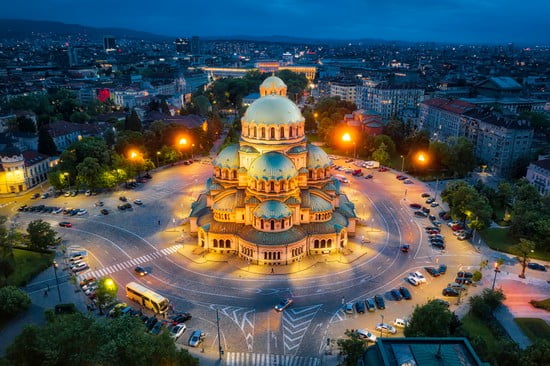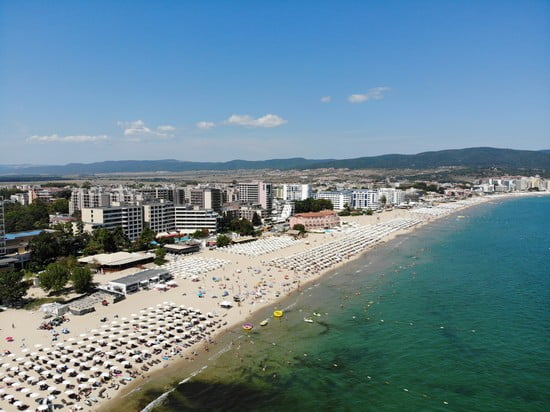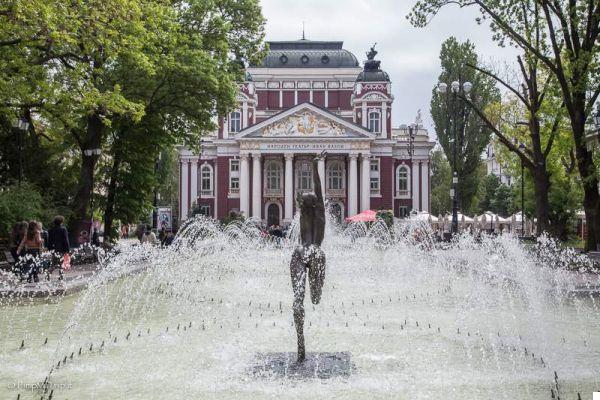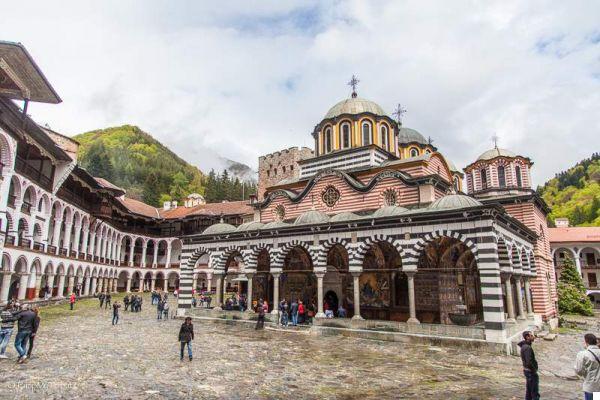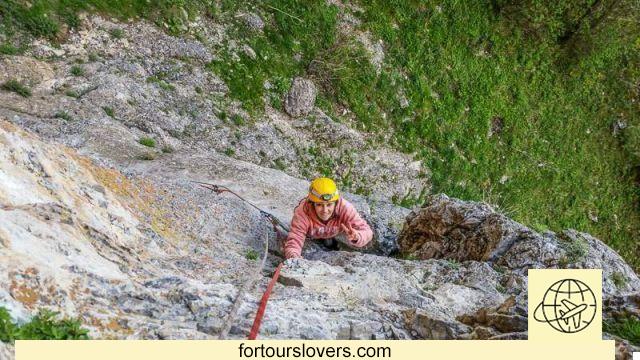Sofia is one of the oldest and most beautiful cities in Europe. While it isn't among the most visited European capitals, it definitely is an excellent destination for a short holiday, perhaps for a romantic weekend to relax even in the middle of winter. Discover the best attractions to see in Sofia.
This capital of Eastern Europe is a fascinating and interesting city to visit, much more than you might expect. The city instills tranquility and a sense of well-being, also given by its spas which are scattered throughout its territory.
Indeed, the main tourist attractions are its 7 spas and the numerous archaeological areas scattered throughout the city center. But perhaps his are even more so churches, heritage of a rich and glorious past, such as the Cathedral of St. Alexander Nevski, one of the largest Orthodox churches in the world and the main tourist attraction in Sofia.
What to see in Sofia
Museums
National archeologic museum - The collections are presented in sixteen rooms on four levels. Among the most valuable pieces are the yellow-headed conure (Conuropsis Carolinensis), which disappeared at the beginning of the 10th century, and the moonstones. Opening hours: from 00:18 to 00:10 in summer and from 30:15 to 30:XNUMX in winter. The museum is closed on Mondays.
Ethnographic Museum - The museum is located in the building of the former Tsar's palace and houses collections of traditional Bulgarian handicrafts, such as clothes, textiles, jewelery and musical instruments. Opening hours: 10am to 00pm in summer and 17am to 00pm in winter. The museum is closed on Mondays.
Museum of the Earth and of Man - Mineralogy Museum, one of the most prestigious museums in Europe, with more than twenty thousand pieces of crystal exhibited.
National History Museum - The museum presents an overview of Bulgarian history from antiquity to the present day. Set up in a mammoth villa, it houses interesting collections of gold and silver from the Thracian period (around XNUMXth century BC) and from the Roman period.
National Museum of Natural History - The National Museum of Natural History of the Bulgarian Academy of Sciences is the richest museum of natural history in the Balkans, with nearly 10 million specimens of animals, plants and minerals. Opening hours: from 00:18 to 00:XNUMX every day.
Churches
Church of San Giorgio Rotonda - This is the oldest church to see in Sofia. It dates back to the XNUMXth or XNUMXth century AD and is located behind the Sheraton Hotel, among the remains of the ancient city of Serdica, in a courtyard surrounded by Roman ruins. Previously, it was used as a mosque under Turkish rule. The building is famous for the XNUMXth, XNUMXth and XNUMXth century frescoes inside the central dome.
Hagia Sophia - Dating back to the XNUMXth-XNUMXth century, it is the second oldest church in the Bulgarian capital. The church of Hagia Sophia, which gives the town its name, was built on top of another older church, which can be seen from a glass on the floor.
Alexander Nevsky Cathedral - Built at the end of the 3.200th century, with its almost 10.000 square meters it is the largest Byzantine basilica built outside Constantinople, capable of accommodating about 5 people. It is probably the most recognizable icon of the Bulgarian capital. Admission is free, but if you want to take pictures you have to pay around XNUMX euros.
Boyana Church - The Church of Boyana, in addition to being classified by UNESCO as a World Heritage Site, is one of the best examples of medieval art in Europe. Its interior is filled with magnificent frescoes depicting scenes from the life of Jesus and the history of the Bulgaria. It is advisable to arrive early in the morning, as no more than 8 people are allowed inside. Find out how to reach it ...
Banya Bashi Mosque - Built on top of the natural spa, it is the only functioning mosque in the city. The most characteristic aspect is that steam can be seen coming out of the floor near the walls of the mosque. It is one of the few attractions not present in the city center.
Sveta Nedelya Church - This medieval church, dedicated to Santa Domenica, has undergone various destructions and reconstructions over the centuries. The current building is among the landmarks of Sofia.
Sofia Synagogue - The third largest synagogue in Europe. It was built in 1909 by Friedrich Grünanger, a famous Austro-Hungarian architect.
Places and attractions to see in Sofia
The Largo is an architectural ensemble of three buildings in the center of Sofia. Today it houses the Council of Ministers, the National Auditorium and the Presidential Seat, and is considered one of the leading examples of socialist classicism architecture, as well as one of the main landmarks of Sofia.
Tsentralni Hali - Sofia's covered market is the ideal location for shopping and for buying souvenirs. Moreover, like all markets it is one of the best places to meet the local people, and to eat products and dishes of the delicious local gastronomy.
Bulgarian National Theater - Also called Ivan Vazov National Theater, it is one of the most beautiful monuments to see in Sofia and one of the best places to take photos.
Royal Palace and National Art Gallery - Housed in the building of the former Royal Palace of Sofia, the gallery houses around 50.000 works by Bulgarian artists, as well as a large number of medieval paintings. Open every day from 10:00 to 18:00, except Mondays which are closed. The cost of the full ticket for adults is 5 euros, while for students, seniors, ... the cost of the reduced ticket is 2,50 euros.
Parliament Square - On this square there is the monument to Tsar Alexander II, who liberates the country and represents the power of freedom. Around the square are the buildings of the National Assembly and the Bulgarian Academy of Sciences.
Ruins of the ancient city of Serdica - The ruins of the ancient city of Serdica, now Sofia, are located in the geographic center of the city, right under the 12 flags of the European Union, next to the 3 buildings that make up The Largo.
Battenberg Mausoleum - The mausoleum houses the tomb of Prince Alexander I (1857-1893), the first head of the modern Bulgarian state.
Parks, zoos and gardens
Borisova Gradina - This is the best known park in Sofia and the "green lung" of the city. It is a pleasant garden with a beautiful central lake, Lake Ariana. Designed in 1884, it was progressively expanded with boulevards, streets and a splendid fountain.
Sofia Zoo - It is the largest and oldest zoo in the city, but also in all of Bulgaria. It is home to over 1500 animals from 250 different animal species, including bears, deer, lions, elephants, jaguars, llamas, cheetahs, ostriches and many more. The zoo is very large, and it can take up to four hours to get through the entire zoo.
The zoo is open every day of the week from 09:00 to 17:00 in winter and from 9:00 to 19:00 in summer. The cost of the entrance ticket is very cheap, and is about 0.50 euros for adults and 0.25 for children.
